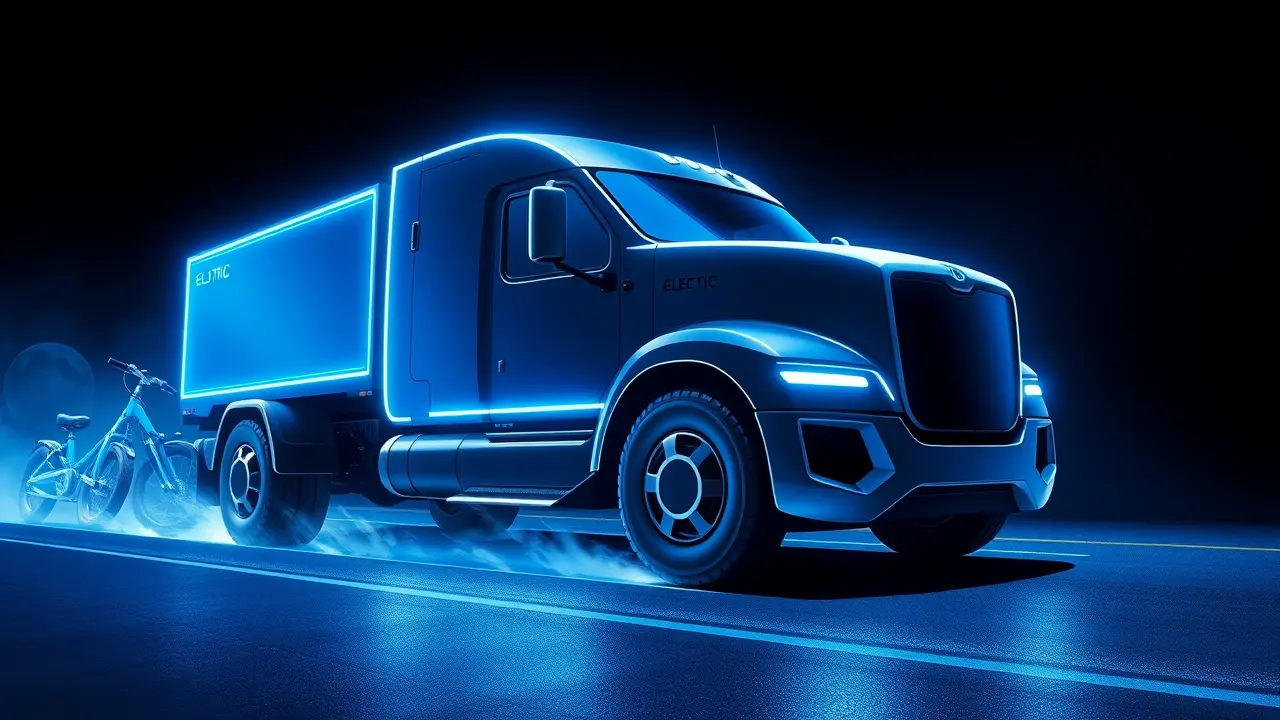Slate Auto reveals its new electric truck at TechCrunch Disrupt.
The cavernous hall of TechCrunch Disrupt 2025 fell into a hush, a collective intake of breath broken only by the near-silent hum of an approaching vehicle, as Slate Auto CEO Chris Barman literally drove the future onto the stage. This wasn't just a reveal; it was a statement, a deliberate act of theatricality meant to shatter the dusty paradigm of automotive unveilings, which have traditionally involved static cars under drapes and carefully orchestrated lighting.Barman’s new electric truck, a sleek, monolithic form that seemed to absorb the stage lights rather than reflect them, rolled to a stop with the quiet confidence of a spacecraft landing, its very presence challenging the internal combustion engine’s century-long dominion over personal and industrial transport. To understand the magnitude of this moment, one must look to the cosmos of automotive innovation, a sector where gravitational forces have long been pulled by the legacy giants of Detroit and Stuttgart, whose incremental updates to pickup trucks—the perennial bestsellers and profit engines of the industry—have often felt like rearranging deck chairs on the Titanic as the iceberg of climate change and energy transition loomed.Slate Auto, a relative newcomer whose name evokes both a clean slate and unbreakable resolve, entered this arena not with a me-too product, but with a vehicle that appears engineered from the ground up, a clean-sheet design that questions every assumption about what a truck can be. Its chassis, likely a marvel of exoskeletal architecture using advanced aluminum alloys and carbon composites, promises a radical weight reduction that directly translates into greater range and payload capacity, two metrics that have been the holy grail for EV truck developers.The powertrain, undoubtedly featuring a state-of-the-art battery pack with a cell chemistry pushing the boundaries of energy density, probably sourced from a partnership with a leader like CATL or Panasonic, is the silent heart of this machine, offering a torque curve so instantaneous it would make even the most powerful diesel pickup feel lethargic. But the true genius of Slate’s proposition may lie in its software-defined nature; imagine a truck whose suspension, traction control, and even horsepower can be reconfigured via over-the-air updates, transforming from a plush highway cruiser to a rugged off-road beast with a tap on a touchscreen, a concept that would have been pure science fiction just a decade ago.The competitive landscape is a veritable asteroid belt of ambition, with Tesla’s Cybertruck representing a polarizing, dystopian vision, Rivian carving out a niche with its adventure-ready R1T, and Ford’s F-150 Lightning proving that electrification can be successfully grafted onto an iconic platform. Slate Auto’s truck, however, seems to be charting a different course, one that balances futuristic aesthetics with practical utility, perhaps incorporating bidirectional charging to power a worksite or a home during an outage, a feature that positions the vehicle not just as transport, but as a mobile power plant.The broader implications ripple outwards like shockwaves from a supernova; a successful launch for Slate could accelerate the entire industry’s timeline, forcing competitors to abandon hybrid strategies and commit fully to electric architectures, while also putting immense pressure on the charging infrastructure networks, from Tesla’s Supercharger web to the nascent Ionna consortium, to expand more rapidly to support the unique charging needs of high-capacity truck batteries. Furthermore, the geopolitical ramifications are profound, as the race for battery minerals—lithium, cobalt, nickel—intensifies, redrawing global supply chains and creating new dependencies that will shape international relations for decades. Chris Barman’s on-stage drive was more than a marketing stunt; it was a declaration that the future of mobility is not a distant star we are slowly drifting towards, but a destination we are now actively, and quite literally, driving toward, with the electric truck serving as our most capable and transformative vessel yet for this great journey into a cleaner, smarter, and more connected automotive cosmos.
JA
Jake Reynolds123k2 days ago
bro just drove the future on stage and my car still needs gas smh idk if im ready for this
0
